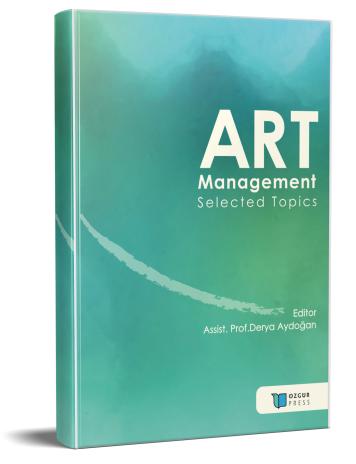
Art Management: Selected Topics
Synopsis
At the outset, art management was largely regarded as a field focused on the exhibition and presentation of artworks to audiences. However, in a relatively short time, it developed both theoretically and practically, moving beyond being merely a practice of “presentation.” Today, art management has reached a strategic position that establishes strong connections with diverse fields such as representation, communication, identity formation, and promotional activities, while fostering creative relationships thorough its interdiciplinary structure.
Art management is no longer confined to aesthetic arrangements; it now stands out as a field that opens debates on presentation, sharing and interaction, while fostering awareness and critical consciousness. This transformation has also reshaped the role of the art manager. Today, art managers are expected not only yo possess technical knowledge and organizational skills, but also to demonstrate multidimensional competencies such as critical thinking, intercultural communication, strategic pşanning and technological adaptability.
In this context, Art Management / Selected Topics aims to initiate discussions on art management through themes that are rarely addressed in the literature. The book focuses on subjects such as the glocal dimensions of curatorial practices, new perspectives on the relationships between time and form, the aesthetic strategies of fashion brands, experience-oriented approaches in window display and spatial design, the transformative effects of digital technologies on museology and curatorial practice, hybrid aesthetics developed for sustainability and translation policies for multilingual and multicultural context. This diversity reveals that art management is not limited to the “art world” alone but is closely intertwined with cultural industries, design, communication and technology.
The objectives of the book can be summarized under three headings:
- To provide a current and in-depth perspective on the dicipline; moving beyond general frameworks to combine both applied and theoretical analyses.
- To adress the applications of the discipline in different sectors, making visible the flexible and adaptable nature of art management.
- To contribute to sustainable art management strategies that take into account local and global contexts, technological innovations and cultural diversity.
In conclusion, this volume seeks to serve not only academics and reserchers but also curators, designers, brans strategist and students as a rich resource of both theoretical and practical insights.
I hope that Art Management / Selected Topics will provide readers with new perspectives and inspire further studies in the field of art management.

